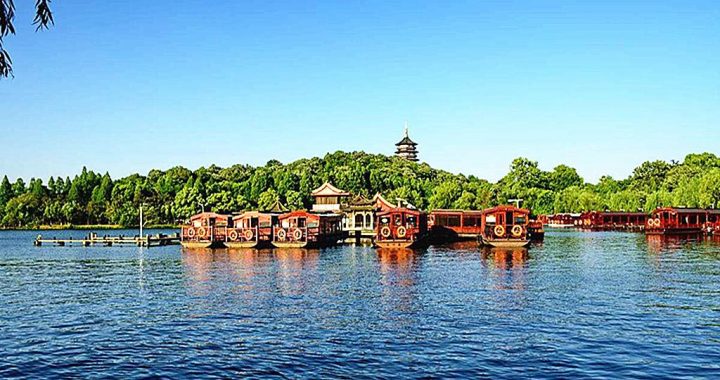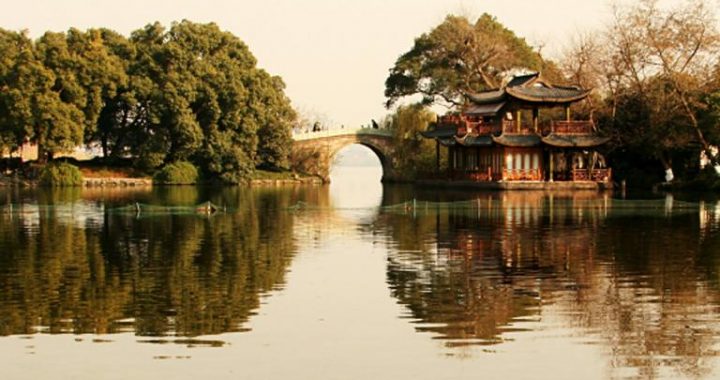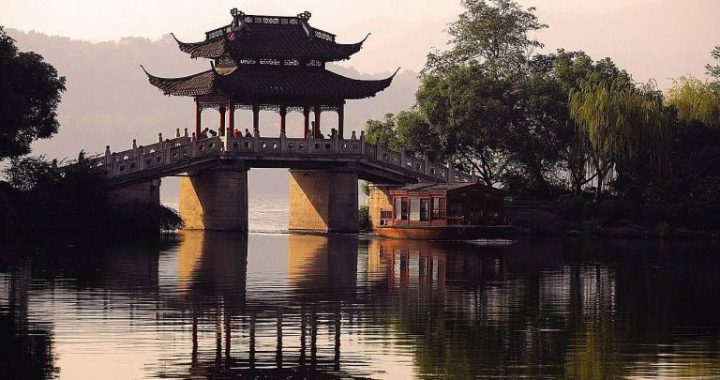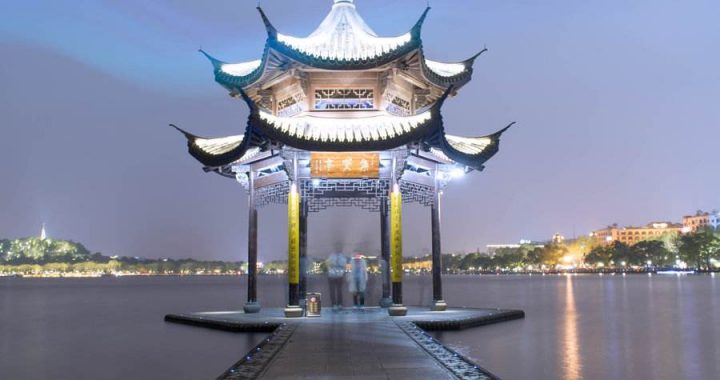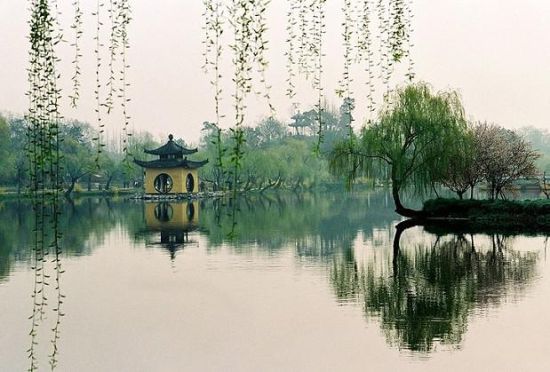The West Lake in Hangzhou
4 min readHangzhou,a beautiful lake-side city,is situated in north Zhejiang Province and on the northern bank of the Qiantang River.The beautiful West Lake lying to the west of the city is bordered by green hills on three sides, leaving one side for the city. It is 3 miles across and 9 miles around, and is about 1.5 meters deep on an average, with isles and temples, pavilions and gardens, causeways and arched bridges, flowers and trees, offering picturesque scenes of great charm everywhere. There are two manmade causeways that divide West Lake into three parts. They are the Bai causeway (Baidi) and the Su causeway (Sudi). Scenic and poetic, both of them are ideal stretches to walk on West Lake. As the lake is beautiful all the year round,a famous saying goes,”who is equally becoming, whether in light or heavy makeup”. These are the words composed by the famous Song Dynasty poet Su Dongpo (960-1127) when he compared the West Lake to Xi Zi, the most beautiful woman in ancient China. These poetic sentiments leave one in no doubt of the glory of the scenery that inspired them.
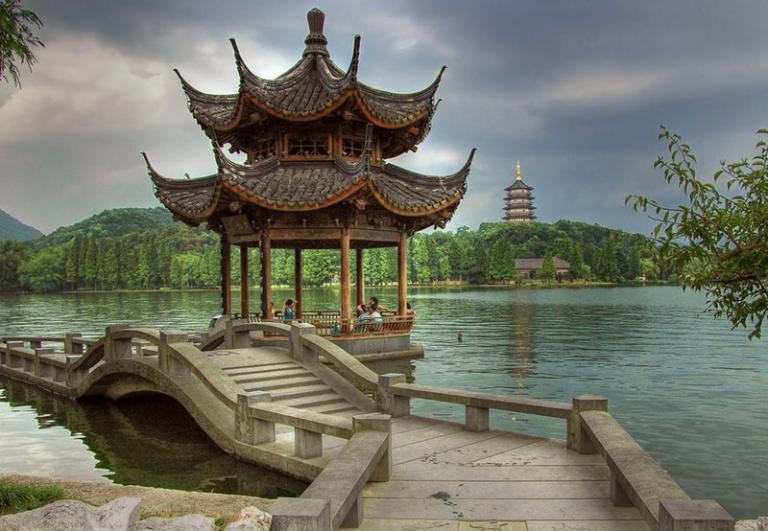
The Bai Causeway was built in 821 during the Tang Dynasty according to the order of Bai Juyi,a noted poet who was the governor of Hangzhou Prefecture. The Bai Causeway was named after him. On both sides of the dike are lined with different trees. Especially in spring, it is green and red everywhere. Tourists may have the feeling of being in a fairyland. In the middle of the Bai Causeway, there is a bridge called Shi Gong Bridge whose original name is Wooden Bridge. At the end of the Bai Causeway is the ring bridge. It is the famous bridge-Duanqiao (Broken) Bridge.
The one kilometer long Bai Causeway ends at the Duanqiao Bridge.
Duanqiao Bridge was so named in the Tang Dynasty. It was an old stone arch bridge covered with bryophyte. Now although a common stone arch bridge in appearance, it is the most famous bridge on the West Lake because it is connected with the love story of the White Snake. The bridge is facing the mountain and againstthe city. It is on the joint point between the North Inner Lake and the Outer Lake. It is the best place to enjoy snow in winter. When the sun comes out after snowing the snow on the south side will melt while the other side is still covered with snow.
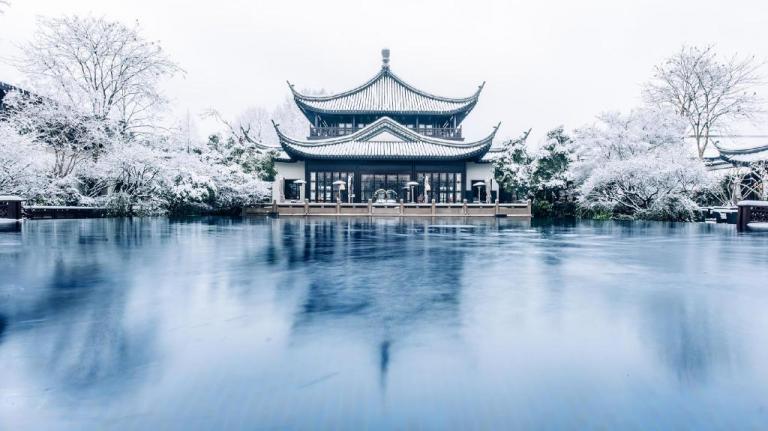
Looking from afar, the bridge is like a broken bridge. Besides, the bridge is the end of the Bai Causeway. In Chinese”duan”also means”ending”.
The Su Caudeway is three times as long as the Bai Causeway. This great dike connects the north and south shores along the western side of West Lake and it is 2.8 kilometers long. There are 6 stone arch bridges in the causeway. The Su Causeway always reminds us of Su Dongpo,a very well-known poet and scholar in the Song Dynasty. He had made great contribution to the local people through his great efforts in controlling the West Lake. The Su Causeway was built under his leadership when he was the local official. In order to commemorate him, the causeway was called the Su Causeway. In the south of the causeway, the memorial museum of Su Dongpo is built. People always describe the West Lake and the lake in Geneva as two pearls of the east and west.
The Three Pools Mirroring the Moon (Santanyinyue) is the biggest isle on the lake. It is actually a park on the lake. Other isles are spread around it. It covers an area of 70,000 square meters with 60% being water. The isle is in a shape of a square. There are many flowers around the isle such as water lily and small lotus.
Red, white and yellow flowers dot everywhere. The Three Pools Mirroring the Moonwas formed with the dug bottom-mud of the lake in 1607 in the Ming Dynasty. The essence for its fame lies in the three small pagodas on the lake to the south of the isle. The pagodas are two meters tall. The lower part of the pagoda is like a ball while the top of it is like a calabash. In a night with a full moon, candles are lit in stone lanterns jutting out of the water thus creating the impression of the reflections of three moons. The scene is truly magical on the night of the Autumn Moon Festival.
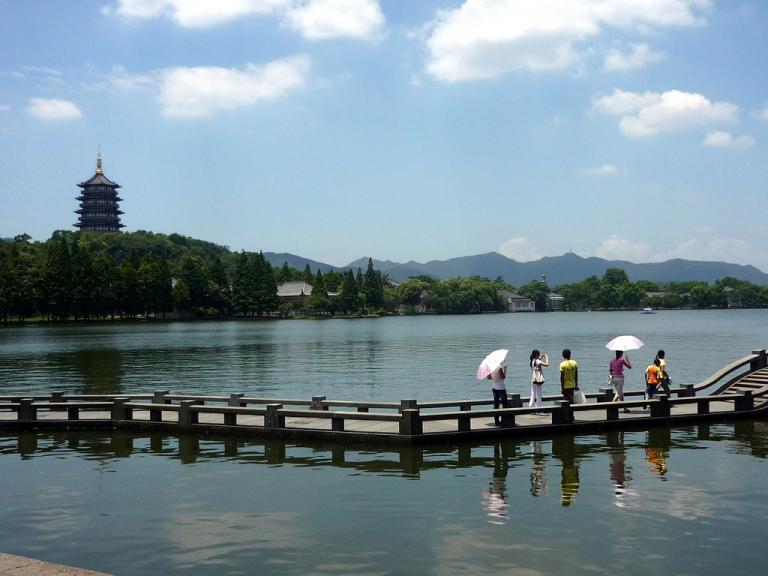
No visitor to the West Lake and Hangzhou can fail to learn something of this city’s most famous products, namely silk and Longjing(Dragon Well) Tea. Since the Tang Dynasty (618-907) silk products from Hangzhou have found their way all over the world. The National Silk Museum is the first Chinese national museum to be dedicated to silk culture and is the largest of its kind in the world.A similar museum is dedicated as homage to tea.Located at the West Lake Dragon Well Tea Plantation,the National Tea Museum provides a fascinating insight into the history and production of Chinese tea.
